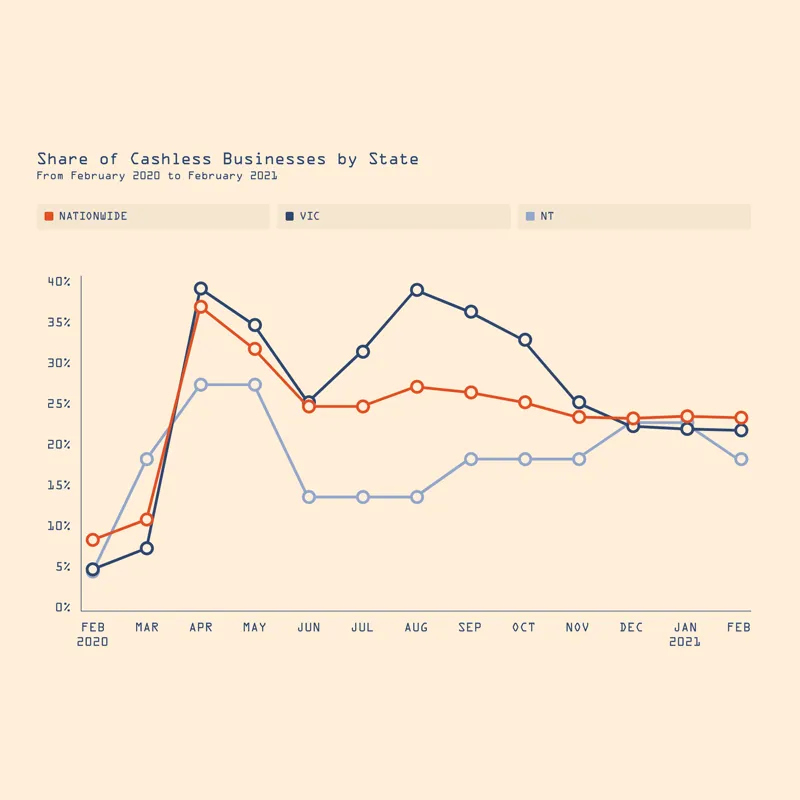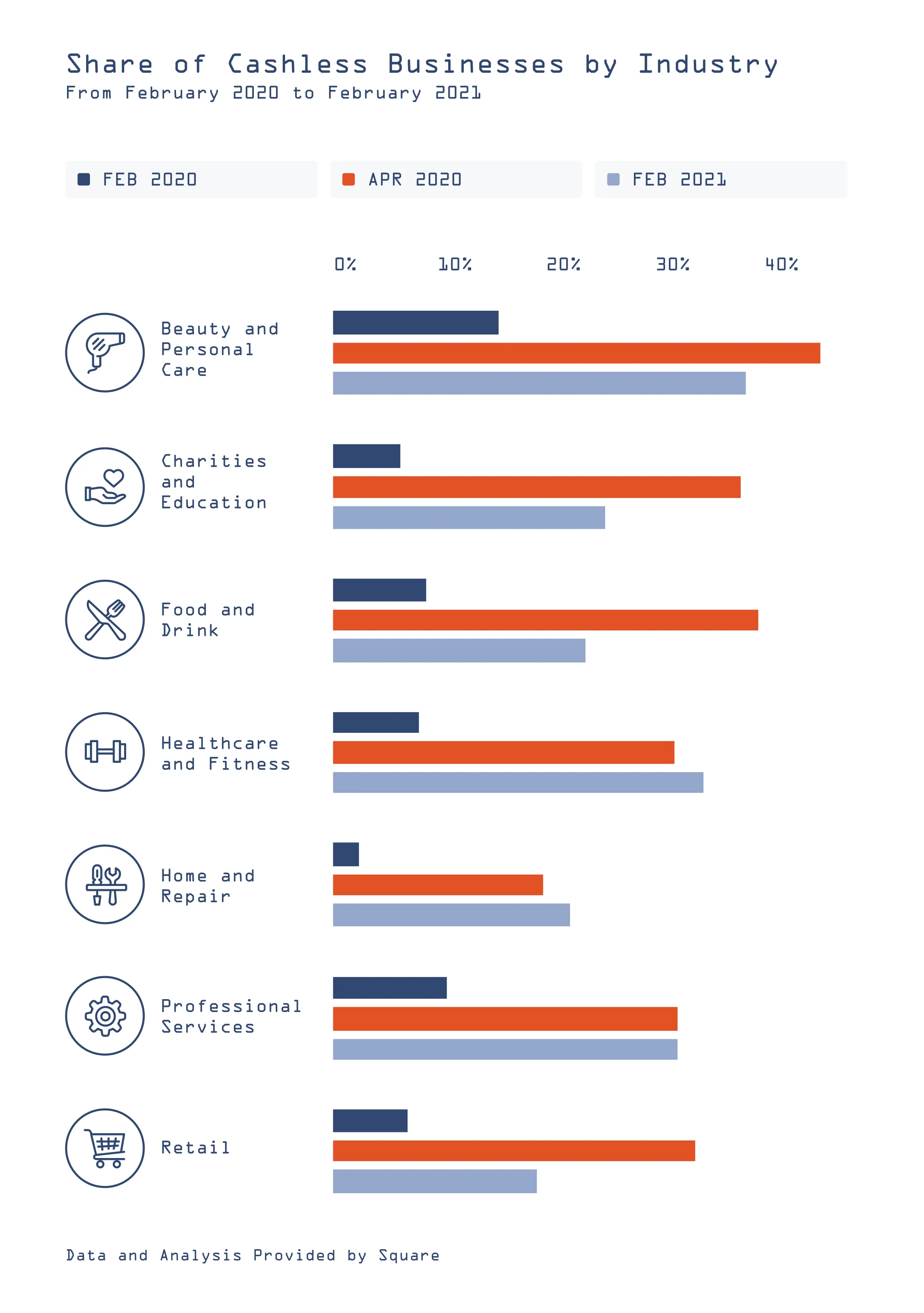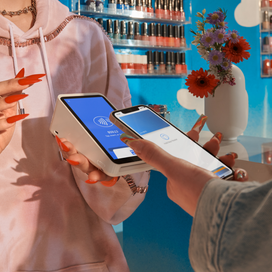The COVID-19 pandemic has had an increasing impact on Australia’s relationship with cashless payments. In fact, there has been such a spurt of growth in cashless payments among Australian businesses that now 1 in 4 businesses are operating as cashless*, compared to just 1 in 12 the same time last year.
We used Square data to compile a report entitled ‘Payments and the Pandemic’ looking at the effects of mandated lockdowns, social-distancing limitations and ongoing trading restrictions on consumer and business behaviour.
Overall, the data shows a sharp decline in cash use as businesses and consumers became more reluctant to physically handle money at a time when mitigating the spread of germs was a top priority. Some regions and industries in Australia are starting to see the use of cash pick up again, however it has not returned to pre-pandemic levels. Here, we dive into some of the key trends to come out of the report.
The move to cashless business operating models
Regionally, Victoria had the most significant rise in the number of cashless businesses operating throughout 2020. While just 5% of the state’s businesses were operating as cashless in February last year, this grew to a peak of 40% in April and then again in August 2020, coinciding with the state’s two lockdown periods. While the number of cashless businesses in the Northern Territory still doubled over the course of 2020, this region saw the least dramatic shift in businesses turning away from cash.

We also saw different industries embrace cashless payments more than others – with Beauty and Personal Care leading the way in April 2020 with more than 40% of businesses in the category going cashless.

Consumers choosing to pay cashless
For consumers, the number of people opting to pay with cash plummeted by more than half throughout the year. In February 2020, 36% of all in-person transactions were made in cash, compared to just 15% by April during the pandemic’s first wave. As of February 2021, cash use had increased a little but only made up 18% of all in-person transactions.
Across the states, Tasmania and the ACT saw the most significant decline in cash use among consumers, while Western Australia and the Northern Territory saw the smallest shift. As of February 2021, Victoria and Western Australia had the lowest rates of cash use in the country (15%), while South Australia and the Northern Territory had the highest (22%).
Sellers that use Square have also noticed a difference. We recently caught up with Brittany Garbutt, owner and managing director of national chain Pretzel, to get her take on the cashless trend. Brittany said that the change in consumer behaviour is evident across Australia.
“Over the past year, our east coast stores have been more impacted by COVID-19 restrictions than our west coast stores, but the shift away from cash use is definitely felt everywhere,” said Garbutt. “Even in our stores that remained open to in-store customers throughout 2020, like Perth, there was still a huge shift in consumers opting to pay contactless. With health concerns top of mind, people just don’t want to handle cash that others have touched — and honestly neither do we.”
With online ordering, contactless payments, curbside pickup and no-contact deliveries becoming the norm for consumers across the country throughout 2020, Square’s data also shows that the share of Australian businesses accepting online payments on the platform has increased more than 1.5 times over the past year.
According to payments expert Professor Steve Worthington from Swinburne University Business School, there are a number of reasons contributing to the continuing low levels of cash use across Australia.
“Consumers have become accustomed to the ease and convenience of eCommerce over the course of the pandemic,” says Professor Worthington.
“A preference to minimise contact with physical currency is likely to be top of mind for consumers for quite some time. What’s more, with bank branch closures and fewer ATMs available, it has become more difficult to access cash and then to find places to spend it,” said Professor Worthington. “Combining that with the fact that many businesses favour digital payments for ease of use, speed and security, there’s less incentive for any of us to carry cash now.”
This trend is not just occurring in Australia, as Square has observed similar trends in other major markets including the U.S., Canada, Japan and the UK. While cash has not completely disappeared, for now, it seems businesses and consumers across the world have become more reluctant to handle cash at a time when health and mitigating the spread of germs is their top priority.
You can view the full Payments and the Pandemic report for Australia here.
Ready to get set up with cashless payments? Learn more about how to take your business cashless with Square.
*Cashless is defined here as accepting 95 per cent or more of transactions through credit or debit cards.
![]()











